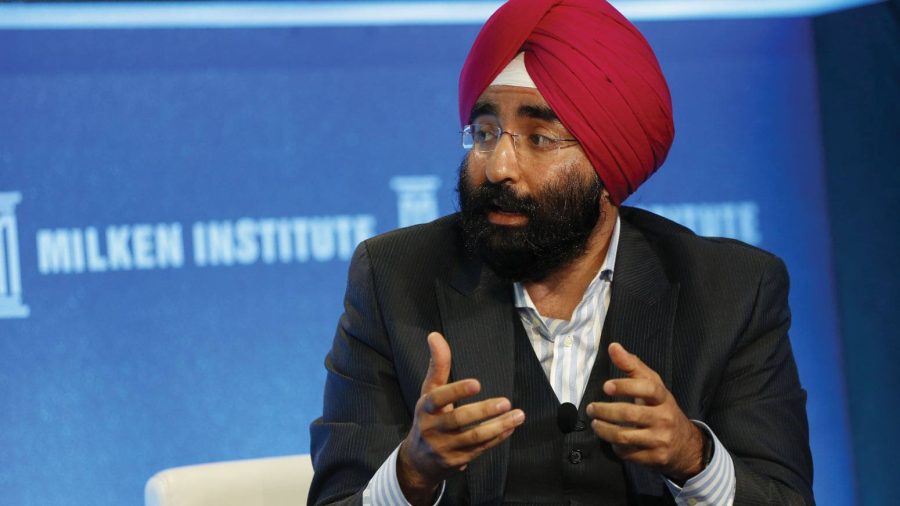The UC Regents lost approximately $9 billion in Investments Assets under Management at the end of the fourth quarter of 2018. The UC Regents’ Assets under Management dropped from $123.1 billion on Sept. 30, to $114.0 billion by Dec. 31 after the Endowment of Oakland moved about $0.5 billion of its cash into alternative investments throughout the third and fourth quarters, with 60 percent invested in real estate, 20 percent in real assets co-invests, and 15 percent in other absolute return strategies that did not rely on directionality of markets.
Before the fourth quarter, the UC Regents investment plan consisted of decreasing investments in public markets and increasing them in the private markets and alternatives in an attempt to diversify the fiscal portfolio. Between the third and fourth quarters the UC Regents surpassed their private market policy portfolio weight of 12% by 2.4%, which is an increase in $0.4 billion. The UC Endowment actually decreased the value of their public equity portfolio by 4.4% (or $0.8 billion), ultimately performing below the policy weight of 42%.
According to Investopedia, an online economic encyclopedia, “generally, public equity investments are usually safer than private equity.” This could be due to a greater liquidity for public markets, meaning that the portfolio assets are more likely to be moved throughout the market through transactions.
After investing $0.5 million in alternative markets, the UC Regents took a $9 billion loss in Assets during the fourth quarter of 2018. The biggest loss was in the Pension Plan, which decreased by $5 billion in the 4th quarter of 2018. The Endowment lost $0.6 billion, the Retirement Saving portfolio lost $2.2 billion, $0.8 billion was lost in Total Return and $0.8 billion was lost in Total Return. Although it is unclear how these losses might immediately translate into the UC campus funds, the Pension Plan, which controls the income given to retired employees, might see one of the largest dents in the $9 billion loss.
At the Jan. 15 Regents meeting, the board attributed part of the loss to two factors: their investment plan made at the end of the third quarter and decision to invest in more private markets, as well as what UC Regents Chief Investment Officer Jagdeep Singh Bachher ascribes as “choppy markets” when the U.S. stock market plunged in November and December of last year.
“At certain points in the year, our cash balance may have gone up to as much as 12 percent or so,” Bachher stated at the meeting. “As the year proceeded, we brought that down, looking at the overall liquidity position, in and around 5 percent. We also had a pipeline of private market opportunities that, in the last two quarters of the year, got fulfilled, and as a result, capital was called.”
Although the UC Endowment maintained a relatively high cash position of 7.5 percent throughout 2018, this was dropped by $0.5 billion to 2.1 percent by September 30, or about $300 million in an attempt to diversify the fiscal portfolio through private investments. This cash portfolio weight was then reduced to 0.4% by the end of the 4th quarter, which, according to the UC Regents fiscal review, translates to $0.0 in a market value measured by the billion. The cash position is a determining factor for the UC Regents liquidity and an indicator of its financial standing.
Senior Manager Director of Absolute Return Edmond Fong, who handles how much the financial portfolio earns or loses in accordance with an investment stated,“We have been talking about our desire to remain opportunistic, but also at the same time we were concerned that this growth risk factor was so dominant in our portfolios that we also wanted to diversify as well.”
Although Fong stated that the Endowment is “now ahead of its target schedule” in private equity investments and predicts a two-to-three percent cash cushion due to inbound capital from FFE’s (furnitures, fixtures, and equipments), this may change due to volatility in the markets. Between the third and fourth quarter, the UC Endowment increased its value in alternative investments such as absolute return, private equity, real estate and real assets, but decreased its position in public equity.
The Risk Allocation for UC Pensions increased in the fourth quarter from 6.7% as of Sep 30 to 9.6% as of Dec 31, and the Endowment Risk Allocation increased from 6.4% to 10.4% volatility.
The board also points toward the US economy in November and the recent government shutdown in December as major contributing factors for the loss at the end of the fourth quarter.
Furthermore, UCOP Chief Risk Officer and Senior Managing Director Richard Bookstaber associates these risks of volatility with three risks, including uncertainties in the markets relating to technology, demographics of the labor force and climate change.
The UC Regents sees a reduction in Investment Performance. “If you fast forward and we do the math on all the negative returns in the stock market and the bond market, essentially, what you’ll see is fiscal year to date are all in the negative territory… about negative 2.5 to 4.5 in the Pension Plan,” Baccher stated.
Endowment Managing Director Ronnie Swinkel also sees a change in the Endowment’s holdings. “We expect to be down about 12%…The main reason for that is the significant underweight for the exposure to emerging markets.”
According to the online financial newspaper that chronicles investments, Pensions and Investments, “As of Dec. 30, the endowment’s allocation was 38.6% public equity, 22.4% absolute return, 14.2% liquidity, 13.3% private equity, 7% real estate, 4.2% real assets and 0.4% cash.”
The UCOP declined to comment on how these losses will affect university campus funds.
photo by Pensions & Investments








